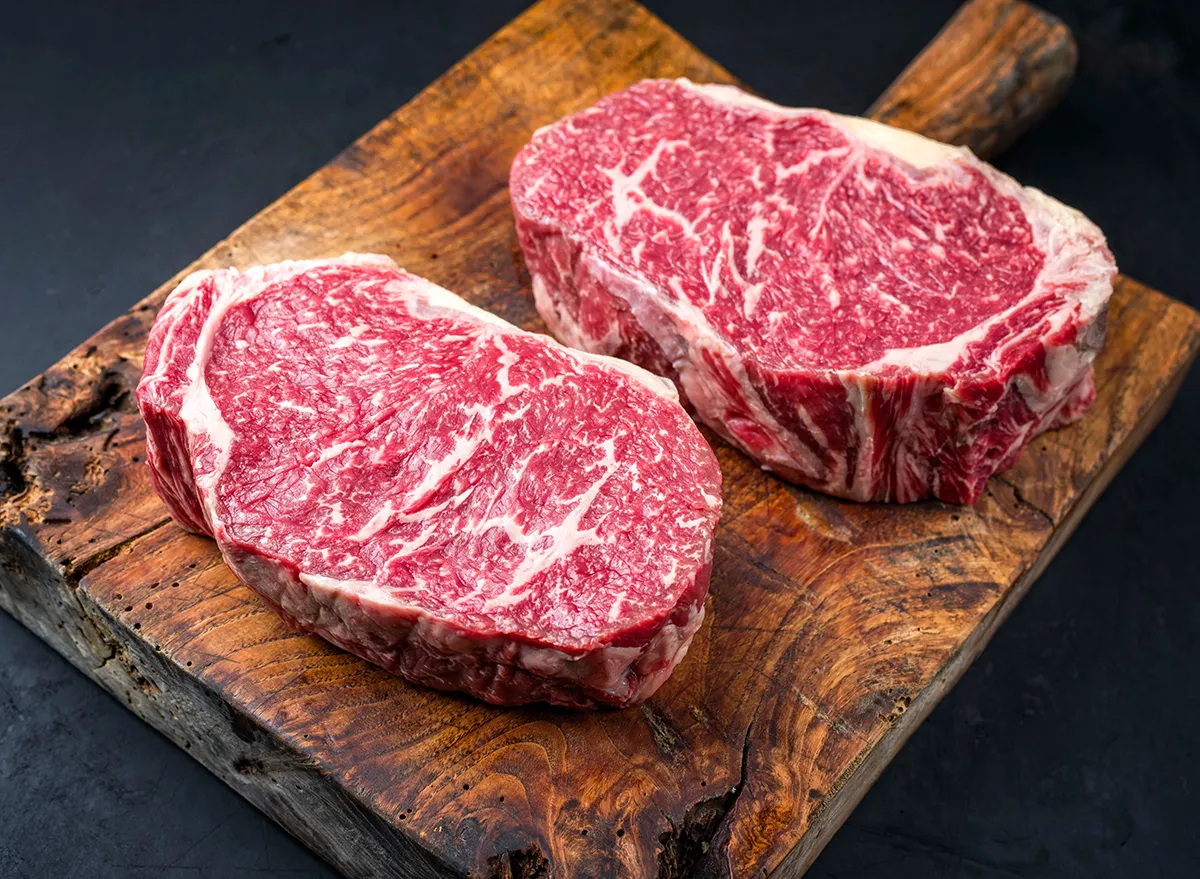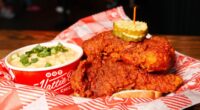When I was a child, my parents had to bribe me to eat meat. An aspiring vegetarian in a meat-and-potatoes household, I earned a quarter each time I took a bite instead of hiding it under the mashed potatoes. Fast-forward a few decades and I am now a person who has just paid the equivalent of $20 for a single bite of nutrient-rich beef.
Let’s clarify that. I’m talking about “snow beef,” a specific kind of Japanese Wagyu, the meltingly tender, buttery steak that is as highly sought-after as it is highly expensive. And it is not hyperbole to say I’ll never forget it.
My husband and I were dining at Hiroki-San, an exclusive Japanese restaurant located inside Detroit’s historic Book Tower building. It was a very special occasion, and I was looking to celebrate in style. Some people buy tickets to “Hamilton” or designer handbags. Me? I splurge on food.
Perusing the menu over cocktails before dinner, I turned to my husband. “Let’s try the Wagyu,” I said. His eyes lit up like I’d gifted him tickets to see the NFL’s Detroit Lions. “Really?” Really.
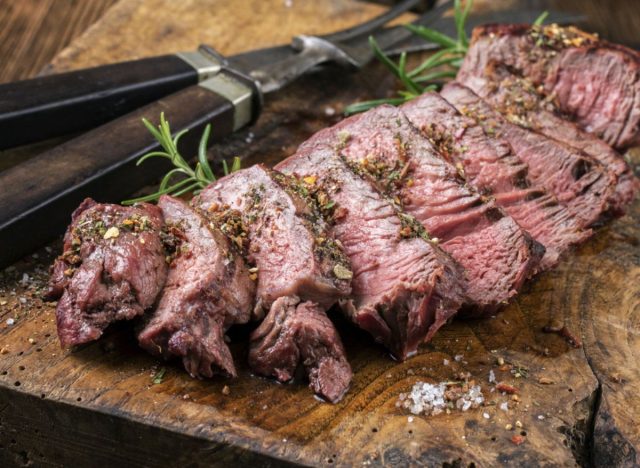
The restaurant offered this extravagant meat in three different ways, ranging in price from $130 to $170 per order.
It’s a lot of pressure to eat something so costly. What if it doesn’t live up to the hype? Honestly, I didn’t really know much about Wagyu. It seemed like some fancy label that’s just slapped on steak so people with expense accounts can show off in front of their guests or business clients. We contemplated the menu and consulted with the server, a woman who seemed very knowledgeable (and certainly enthusiastic) about this premium-grade beef. Each option came with a different name: “olive,” “snow,” and Miyazaki. We opted for snow. Why? It sounded cool and made me think of the HBO series “Game of Thrones.”
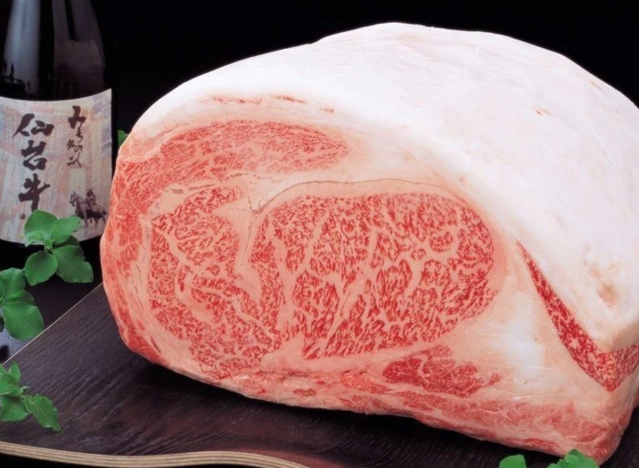
The meat came served atop a small bowl of warm coals, a few still glowing red, with campfire-like aromas wafting our way. A screen placed over the bowl bore eight bite-sized slices of the beef in question. Priced at $150, the dish worked out to $18.75 per piece. Add tax and tip you’re looking at easily $20 per bite. Would it be worth it?
Each piece was ringed in the kind of carbon-black crackling you’d find on a perfect s’more. The meat itself was ruby rare, reminiscent of a mini version of a standing rib roast. Lush fat glistened.
I took a deep breath, forked a slice, and popped it in my mouth.
With that bite, I thought back to my first taste of real meat when I abandoned my vegetarian ways years ago. It was bacon from a local farm that raised happy, fat, pastured pigs. One bite of the melting fat and savory, crisp bacon flesh and there was no turning back.
This Wagyu was the beef version of that life-changing bacon. The creamy interior melted in the way that the fatty parts of bacon do, the deeply caramelized crust serving that satisfying-to-the-marrow bacon crunch that keeps something so soft from veering into astoundingly good baby food.
But the flavor? Not like bacon. Exponential to bacon. Deep, mysterious, like a dream you can’t recall upon waking but you know it was wonderful, like maybe the one where you can fly. There were three bites left for my share so I tried to mete them out ever more slowly. Too soon they were gone. A ghost, a visceral memory of smoke and snow.
I didn’t want to eat anything else that would overwrite the lingering taste. I didn’t want to eat any steak other than this ever again.
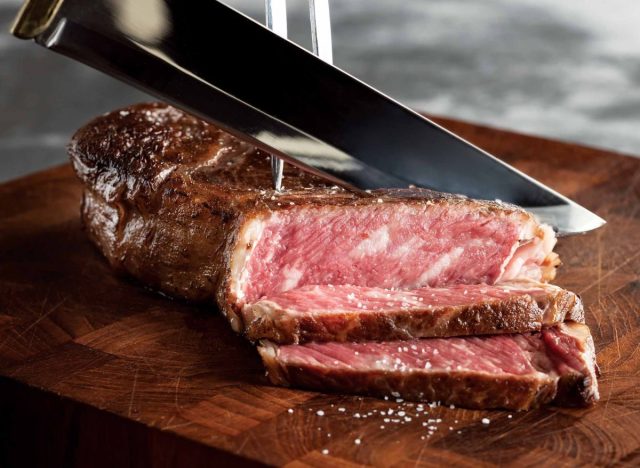
Now that I’d finally experienced Wagyu for myself, I understood what all the fuss was about with this legendary steak, and I wanted to know why exactly it was so very delicious—and so very expensive.
I turned to Brinn Sinnott, culinary director for Method Co. (aka the chef behind the development of Hiroki-San and a guy who’s worked with the likes of legendary Japanese toque Masaharu Morimoto). I also spoke with Antonio Iocchi, senior vice president of global innovation for the popular Brazilian steakhouse chain Fogo de Chão, one of the biggest purveyors of Wagyu beef in America. Here’s what they shared.
In short: that profound flavor is the direct payoff from a painstaking cattle-raising and beef-importing process. The term Wagyu literally translates to Japanese cow in English. These cattle are bred and cared for under exacting standards in the Land of the Rising Sun. Exactly where they’re raised and what they’re fed has a lot to do with how fattened they become and how good their meat tastes later on. If you were so inclined, you could really geek-out about Wagyu specificities in the same way that a wine aficionado discusses terroir.
While certain Wagyu breeds are now raised in the United States and Australia, the beef that I ate at Hiroki-San is the real-deal Asian import, which naturally increases its price tag.
Sinnott explains that every Wagyu steak that’s served at Hiroki-San comes with an official certification from the regional Japanese authority where the animal originated. “Oftentimes they have like a cute little, almost like a pawprint of the calf on the thing,” he says.
The “snow beef” that I enjoyed, for instance, came from Hokkaido, the northernmost region of Japan, where it’s aged and buried under the snow, so the “fatty acids slowly break down,” producing a more complex flavor, Sinnott says.
Sinnott’s favorite, the “olive beef,” comes from cows in Kagawa Prefecture, roughly 1,200 miles south of Hokkaido, where they’re fed mulched olives. (That one costs $170 per order, in case you’re wondering.) “What the cow eats determines what sort of flavor molecules end up being in the fat,” he says, “which then determines the overall flavor.”
Fogo de Chão’s Iocchi expounds further. “Raising Wagyu cows requires a longer and slower feeding process that helps to increase their fat content,” he says. “Japanese Wagyu cows are fed three times a day with a specialty feed [that] is almost like a secret recipe that can vary by rancher. During the feeding process, the cow’s vitals are also often checked by veterinarians to ensure they’re in good health and not stressed, because happy, healthy cows provide the best quality.”
If you’re new to Wagyu, Iocchi has some advice. “I recommend that everyone trying Wagyu for the first time should try it at a restaurant that specializes in high-quality meat that is butchered, prepped, and cooked over a hot grill such as Fogo de Chão,” he says. “Trying it at a restaurant, rather than cooking it yourself, will ensure that the Wagyu is properly cooked and seasoned to perfection and will allow guests to experience the flavor characteristics of how they’re meant to be enjoyed.”
I can absolutely see that. At this kind of cost, it’s not something you’d want to botch your first time out. (That said, I was googling where to buy it online before dinner was over.) And it tracks with the way I had my first Wagyu experience at Hiroki-San, cooked just a few feet away over fire.
You also want to time it perfectly in your meal. Iocchi suggests ordering a plate to share at the beginning of your meat service, when your palate is clear, so you “truly taste the robust, melt-in-your-mouth flavor.”
Just know that once you go Wagyu, you may need some sort of bribe to ever go back.

